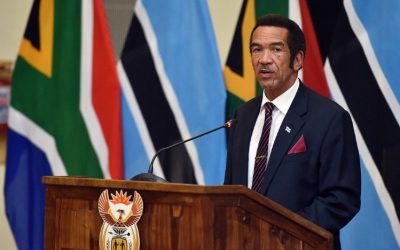Overview of Botswana Currency
The currency of Botswana, known as the Botswana Pula, is the official medium of exchange in the country. It plays a vital role in the nation’s economy by facilitating trade, commerce, and daily transactions. Understanding the Botswana currency is essential for individuals and businesses involved in international trade, particularly when converting to and from USD. This overview provides insights into the Pula’s value, history, and its comparison with the US dollar, offering a comprehensive understanding of Botswana’s currency landscape.
History of the Botswana Pula
The currency of Botswana is the Botswana Pula, abbreviated as BWP. It is the official monetary unit used throughout the country and is widely accepted in both domestic and international transactions. The name “Pula” translates to “rain” in Setswana, symbolizing the importance of rainfall for agriculture and prosperity in Botswana.
The Botswana Pula has a rich history that reflects the country’s economic development and monetary stability. It was introduced in 1976, replacing the South African rand at par, following Botswana’s independence from British colonial rule in 1966. The initial issuance of the Pula aimed to establish a distinct national identity and bolster economic confidence. Over the years, the currency has undergone various changes, including the introduction of new banknotes and coins that depict Botswana’s cultural heritage and wildlife.
Today, the Botswana Pula remains a relatively stable currency, supported by Botswana’s diverse economy, which is largely driven by diamond mining, tourism, and agriculture. When comparing the Botswana Pula to USD, exchange rates fluctuate based on global market conditions, but the Pula is generally regarded as a稳定 and secure currency in the region. The exchange rate between Botswana Pula and USD is an important aspect for traders, travelers, and investors engaging with Botswana’s economy.
Current Currency Specifications
The currency of Botswana is the Botswana Pula, which is the official monetary unit used across the country. It is abbreviated as BWP and is widely accepted for all transactions within Botswana. The Pula is subdivided into 100 thebe, which are used in everyday transactions. The currency is managed by the Bank of Botswana, ensuring stability and regulation in the nation’s financial system.
The current specifications of the Botswana Pula include its various denominations of banknotes and coins. Banknotes are issued in denominations of 10, 20, 50, 100, and 200 Pula, featuring national symbols and prominent figures. Coins are available in denominations of 1, 5, 10, and 50 Thebe, with the 1 Pula coin also in circulation. The currency design emphasizes national culture and heritage, and the notes incorporate advanced security features to prevent counterfeiting.
When converting Botswana Pula to USD, exchange rates fluctuate based on international financial markets. As of recent data, 1 Botswana Pula is approximately equal to 0.08 US Dollars, but this rate varies daily. Visitors and investors should consult current exchange rates via banks or forex platforms to get accurate conversions for transactions or planning purposes.
Design Features and Security Elements
The currency of Botswana is the Botswana Pula, abbreviated as BWP, which is the official monetary unit used throughout the country. It features various denominations in coins and banknotes, each designed to reflect the nation’s cultural heritage and wildlife.
Design features of Botswana currency include vibrant colors, traditional patterns, and images of important national symbols such as wildlife, history, and cultural artifacts. Banknotes often depict animals like elephants, lions, and zebras, showcasing Botswana’s rich biodiversity, while coins may display national icons and important figures.
Security elements incorporated into Botswana banknotes and coins are advanced to prevent counterfeiting. These include watermarks, security threads, holographic strips, color-shifting inks, and micro-printing. Some denominations also feature transparent windows and UV-sensitive elements, ensuring authenticity and maintaining trust in the currency system.
Exchange Rate Dynamics
Exchange rate dynamics refer to the fluctuations in the value of a currency relative to other currencies, influenced by various economic, political, and market factors. Understanding these movements is essential for businesses, investors, and policymakers, especially when evaluating currency exchange between Botswana Pula and the US Dollar. Analyzing the factors that drive the Botswana currency to USD exchange rate helps to comprehend broader economic trends and facilitate informed financial decisions.
Historical Exchange Rate Trends
The exchange rate dynamics between the Botswana Pula (BWP) and the US Dollar (USD) have experienced significant fluctuations over the past decades, reflecting various economic factors and global market trends. Historically, the Botswana Pula has been relatively stable due to the country’s strong diamond exports and sound monetary policies, but it has also seen periods of depreciation and appreciation in response to external shocks and internal economic developments.
- The early 2000s marked steady appreciation of the Pula against the USD, driven by rising diamond revenues and foreign investment.
- During the 2008 global financial crisis, the exchange rate was volatile, with occasional depreciation due to decreased demand for Botswana’s exports and global financial uncertainty.
- In the 2010s, the Pula generally maintained stability, aided by prudent monetary management and efforts to diversify the economy beyond diamonds.
- Recent years have seen some fluctuations, with minor depreciations in response to global economic shifts, but overall, the Pula has remained comparatively stable against the USD.
- Exchange rate trends are also affected by commodity prices, foreign direct investment, and monetary policies of both Botswana and the United States.
- Understanding historical trends helps in assessing future movements of the Botswana Pula to USD exchange rate.
- Factors such as global economic conditions, commodity prices, and political stability continue to influence this currency pair.
Factors Influencing the Pula to USD Rate
The exchange rate dynamics between the Botswana Pula (BWP) and the US Dollar (USD) are influenced by various domestic and international factors. Changes in global commodity prices, particularly diamonds, significantly impact the Bula since Botswana’s economy is heavily reliant on diamond exports. Additionally, economic policies implemented by the Bank of Botswana, including interest rate adjustments and foreign exchange reserves management, play a crucial role in determining the Pula’s strength against the USD. External factors such as fluctuations in the US dollar’s value, geopolitical stability, and global economic conditions also affect the exchange rate. Moreover, capital flows, foreign direct investments, and trade balances influence the Pula’s demand relative to the USD. Overall, currency movements between the Pula and USD are shaped by a combination of economic fundamentals, government policies, and international market trends.
Impact of Economic Policies
The exchange rate dynamics between the Botswana Pula (BWP) and the US Dollar (USD) are influenced by various economic policies and external factors. Changes in fiscal and monetary policies in Botswana can significantly impact the stability and fluctuation of the Pula against the USD. Understanding these influences helps to assess the currency’s behavior and predict future movements.
Economic policies play a crucial role in shaping exchange rates. In Botswana, policies related to inflation control, interest rates, and foreign reserves management directly affect the Pula’s value against the USD. For instance, inflation targeting can lead to currency stability, while expansionary monetary policies might weaken the Pula due to increased money supply. Additionally, government interventions and trade policies can either support or hinder the currency’s strength.
- Monetary Policy Adjustments: Changes in interest rates by the Bank of Botswana influence capital flows, affecting the Pula’s value against USD.
- Trade Balance and Commodity Prices: As Botswana relies heavily on mineral exports like diamonds, fluctuations in global commodity prices can impact foreign exchange earnings and thereby influence the exchange rate.
- Foreign Reserve Levels: Adequate reserves allow Botswana to intervene in the forex market to stabilize the Pula when necessary.
- External Economic Factors: Economic conditions in the US, such as Federal Reserve policies and USD strength, also affect Botswana’s exchange rates through global capital movements.
- Government Fiscal Policies: Budget deficits or surpluses can influence inflation expectations and currency stability.

Factors Affecting the Botswana to USD Exchange Rate
The exchange rate between Botswana’s currency and the US dollar is influenced by a variety of economic, political, and global factors. Understanding these elements is essential for analyzing fluctuations in the Botswana to USD exchange rate. Factors such as commodity prices, inflation rates, government policies, and international trade dynamics all play a significant role in shaping the value of Botswana’s currency relative to the US dollar. Examining these components provides insights into the currency’s movement and stability in the foreign exchange market.
Economic Indicators and Performance
The exchange rate between Botswana Pula (BWP) and US Dollar (USD) is influenced by various economic factors and indicators that reflect the country’s economic health and global economic trends. Understanding these factors is essential for investors, policymakers, and traders involved in currency exchange and international trade.
- Economic Performance: Botswana’s overall economic stability and growth, driven by sectors like mining, tourism, and agriculture, impact its currency strength relative to the USD.
- Inflation Rates: Higher inflation in Botswana can devalue the Pula, making it less favorable against the USD, while low inflation tends to strengthen the currency.
- Interest Rates: Changes in Botswana’s interest rates compared to US rates influence capital flows, affecting the demand for the Pula versus the USD.
- Foreign Exchange Reserves: Sufficient reserves enable the central bank to stabilize the Pula and manage fluctuations against the USD.
- Trade Balance: A trade surplus, where exports exceed imports, can bolster the Pula, whereas a deficit may weaken it against the USD.
- Global Economic Conditions: Economic stability in the US and worldwide impacts investor confidence and currency valuation for Botswana.
- Government Policies and Political Stability: Sound fiscal policies and political stability foster confidence in the Pula, influencing its exchange rate with the USD.
Overall, the Botswana to USD exchange rate is a complex interplay of domestic economic indicators and external global factors, with performance in key sectors and macroeconomic stability playing vital roles in determining currency strength.
Commodity Prices and Export Revenues
The exchange rate between Botswana Pula (BWP) and the US Dollar (USD) is influenced by a variety of factors, including commodity prices and export revenues. Botswana’s economy is heavily reliant on the diamond industry, making commodity prices a significant determinant of the currency’s strength. Fluctuations in global diamond prices can directly impact Botswana’s export revenues, strengthening or weakening the Pula accordingly. Additionally, the overall demand for commodities in international markets affects export earnings and, consequently, the exchange rate. Economic policies, inflation rates, and foreign investment also play vital roles in shaping the Botswana to USD exchange rate, while external factors such as geopolitical stability and global economic conditions further influence currency movements. Understanding these interconnected factors is crucial for predicting and analyzing currency value fluctuations in Botswana’s economy.
Foreign Investment and Trade Relations
The exchange rate between Botswana Pula (BWP) and US Dollar (USD) is influenced by various economic and geopolitical factors. Fluctuations in foreign investment levels significantly impact the currency value, as increased foreign investment can bolster the Pula by boosting demand for Botswana’s assets and currency. Conversely, reduced foreign investment can weaken the Pula, causing depreciation against the USD. Trade relations also play a crucial role; strong trade partnerships and exports, particularly in minerals like diamonds, tend to strengthen the Pula by creating higher foreign currency inflows. Additionally, global economic conditions, commodity prices, and monetary policy decisions by both Botswana and the United States influence the exchange rate. Political stability and fiscal policies within Botswana further contribute by affecting investor confidence and overall currency stability. Therefore, the interplay of these factors determines the fluctuation of the Botswana to USD exchange rate, reflecting both domestic and international economic trends.
Political Stability and Policy Decisions
The Botswana to USD exchange rate is significantly influenced by political stability and policy decisions within the country. Botswana’s stable political environment fosters investor confidence, which in turn supports a strong and reliable currency. Sound government policies, particularly those related to economic management, trade, and foreign currency reserves, play a crucial role in maintaining a favorable exchange rate. Political stability reduces uncertainty and encourages foreign investment, which can boost the national currency’s value against the USD. Conversely, political unrest or inconsistent policy decisions can lead to currency depreciation, as investors seek safer assets. Therefore, the interplay between political stability and sound policy frameworks is essential in determining the Botswana to USD exchange rate.
Exchange Rate Platforms and Resources
Exchange rate platforms and resources are vital tools for individuals and businesses seeking to understand currency value fluctuations and make informed financial decisions. When considering the Botswana currency (BWP) to USD exchange, these platforms provide real-time data, historical trends, and analysis to help users navigate the dynamic currency markets effectively. Staying updated with reliable sources ensures accurate conversions and better planning for international transactions.
Online Currency Conversion Tools
When researching the exchange rate between Botswana Pula (BWP) and US Dollar (USD), several online currency conversion tools and platforms can be highly useful. These platforms offer real-time exchange rate updates, making it easy to determine the current value of BWP against USD.
Popular online currency conversion tools include XE.com, OANDA, and Investing.com. They provide accurate and up-to-date rates, along with historical data and currency.converter features for easy conversion. Additionally, financial news websites such as Bloomberg and Reuters often display current exchange rates and market analyses relevant to Botswana and the USD.
Many banking websites and mobile banking apps also have currency conversion calculators, which are convenient for customers to check rates directly through their financial service providers. It is advisable to compare rates from multiple sources to get the most accurate understanding of the current BWP to USD exchange rate, especially if planning for travel, remittances, or currency trading.
Bank and Financial Institution Rates
Exchange rate platforms and resources are essential tools for individuals and businesses looking to convert Botswana Pula (BWP) to US Dollars (USD). These platforms provide real-time updates on currency fluctuations, enabling users to make informed financial decisions. Banks and financial institutions play a significant role by offering their own exchange rates, which might differ slightly from publicly available rates due to fees and margins. It is advisable to compare rates across multiple sources, including online forex platforms, bank rates, and financial news portals, to ensure the best conversion value when transferring Botswana currency to USD. Staying updated with official rates from central banks and financial institutions can help users navigate currency exchange efficiently and securely.
Forex Markets and Trading Platforms
Understanding exchange rate platforms and resources is essential for traders and investors looking to convert Botswana Pula (BWP) to US Dollars (USD). These platforms provide real-time data and valuable insights into currency fluctuations, facilitating informed decision-making. Forex markets serve as the global marketplace where currencies are traded, including the Botswana Pula against the US Dollar. Access to reliable trading platforms is vital for executing trades efficiently, offering features such as live price charts, technical analysis tools, and automated trading bots. Whether you’re a beginner or an experienced trader, utilizing reputable forex platforms with comprehensive resources helps monitor the BWP/USD exchange rate and capitalize on market movements effectively.
Practical Applications of Exchange Rate Information
The exchange rate between Botswana Pula and US Dollar plays a vital role in various practical scenarios, influencing economic decisions for businesses, tourists, and policymakers. Understanding this rate helps in making informed financial choices, managing currency risk, and optimizing international transactions. In the context of Botswana’s economic activities and its trade relations with the United States, accurate and timely exchange rate information is essential for ensuring smooth cross-border operations and promoting economic stability.
Travel and Tourism
Exchange rate information between Botswana’s currency, the Pula, and the US dollar is vital for travelers and the tourism industry. Accurate and up-to-date data helps tourists plan their budgets, ensuring they have sufficient funds for accommodation, transportation, and activities. For travel agencies and tour operators, understanding currency fluctuations assists in pricing packages competitively and managing financial risks.
Moreover, tourism businesses benefit from exchange rate insights by offering transparent pricing to international visitors, enhancing trust and customer satisfaction. Currency information also facilitates seamless transactions, whether in hotels, restaurants, or retail shops, stimulating economic growth within the tourism sector. Overall, staying informed about the Botswana Pula to USD exchange rate supports smoother travel experiences and promotes Ghana’s tourism appeal to international visitors.
Business Transactions and Investments
Exchange rate information between the Botswana currency (BWP) and the US dollar (USD) plays a vital role in various practical applications, especially in business transactions and investments. Accurate and timely exchange rate data enables businesses to price their goods and services competitively when dealing with international clients or suppliers. It also helps investors assess the potential risks and returns associated with cross-border investments involving Botswana’s currency. Furthermore, understanding fluctuations in the BWP to USD exchange rate allows companies to manage currency risk through hedging strategies, thereby safeguarding profit margins. For travelers and expatriates, this information aids in budgeting and financial planning. Overall, reliable exchange rate data enhances informed decision-making in international trade and investment activities involving Botswana.
Remittances and Personal Transfers
Exchange rate information between Botswana Pula (BWP) and US Dollar (USD) plays a vital role in various practical applications, especially in the context of remittances and personal transfers. Accurate and real-time exchange rate data helps individuals and businesses determine the true value of their transactions when sending money across borders, ensuring transparency and fairness. For residents and expatriates in Botswana, understanding these rates enables them to make informed decisions on the timing and amount of their transfers to maximize value and minimize costs. Moreover, businesses engaged in import and export activities rely heavily on exchange rate information to manage currency risk, plan pricing strategies, and optimize profitability. Remittances from Botswana to the US, or vice versa, are also influenced by fluctuations in the exchange rate, impacting the amount received or sent. Overall, access to reliable exchange rate data supports economic stability and personal financial planning, fostering smoother international transactions between Botswana and the US.





0 Comments